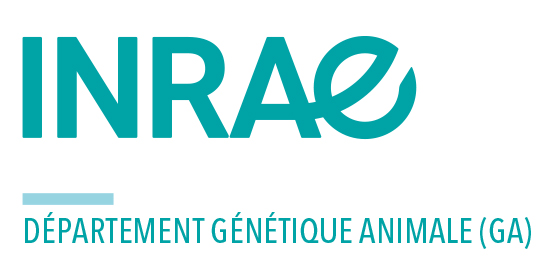Improving feed efficiency in meat sheep increases CH4 emissions measured indoor or at pasture
Résumé
Ruminants are often criticized when it comes to environmental impacts, due to CH4 production and to the part of concentrates in the diets. A major objective in breeding ruminants is to limit both feed-food competition and greenhouse gas (GHG) emissions. We divergently selected, over 4 generations, Romane meat sheep on their Residual Feed Intake (RFI) from 3 to 5 months old under a 100% concentrate diet. We present here two results of GHG measurements (performed with sheep GreenFeed, CLock) on males and females belonging to these divergent lines (animals were from the RFI-(efficient) or RFI+ (inefficient) line). A total of 124 males belonging to the 3 rd and 4 th generations of selection, bred indoor, had both GHG and forage intake measurements. On average, males weighed 64.6 kg and emitted 1345 g/d of CO2 and 39.26 g/d of CH4. Positive correlations were estimated between CO2 and CH4 (0.59) and between gases and forage intake (0.24 for CH4 and 0.54 for CO2) and body weight (0.38 for CH4 and 0.78 for CO2). No significant differences were observed between RFIand RFI+ males on body weight. RFI-males ate less forage than RFI+ ones (1.13 kg/d for RFI-and 1.22 kg/d for RFI+) but they emitted significantly more CH4 (38.86 g/d for RFI-and 37.50g/d for RFI+), and less CO2 (1326g/d for RFI-and 1335 g/d for RFI+). We confirmed this result with 85 ewes from the 4 th generation of selection, first fed indoor with dry forage and then fed at pasture: RFI-ewes emitted significantly more CH4 than RFI+ ewes, whatever the diet. GHG emissions were positively correlated between both diets (0.48 for CH4 and 0.56 for CO2). Animal effects for GHG emissions, obtained from a repeatability model were significantly correlated under the two diets (from 0.66 for CH4 to 0.78 for CO2 intensity). Both studies highlight unfavourable relationship between feed efficiency and gas emissions: the more efficient animals ate less, but emitted more CH4 than the less efficient ones. Moreover, phenotyping GHG indoor under a forage-based diet is of high interest when phenotyping GHG at pasture is not feasible.
Domaines
Sciences du Vivant [q-bio]
Origine : Fichiers produits par l'(les) auteur(s)
